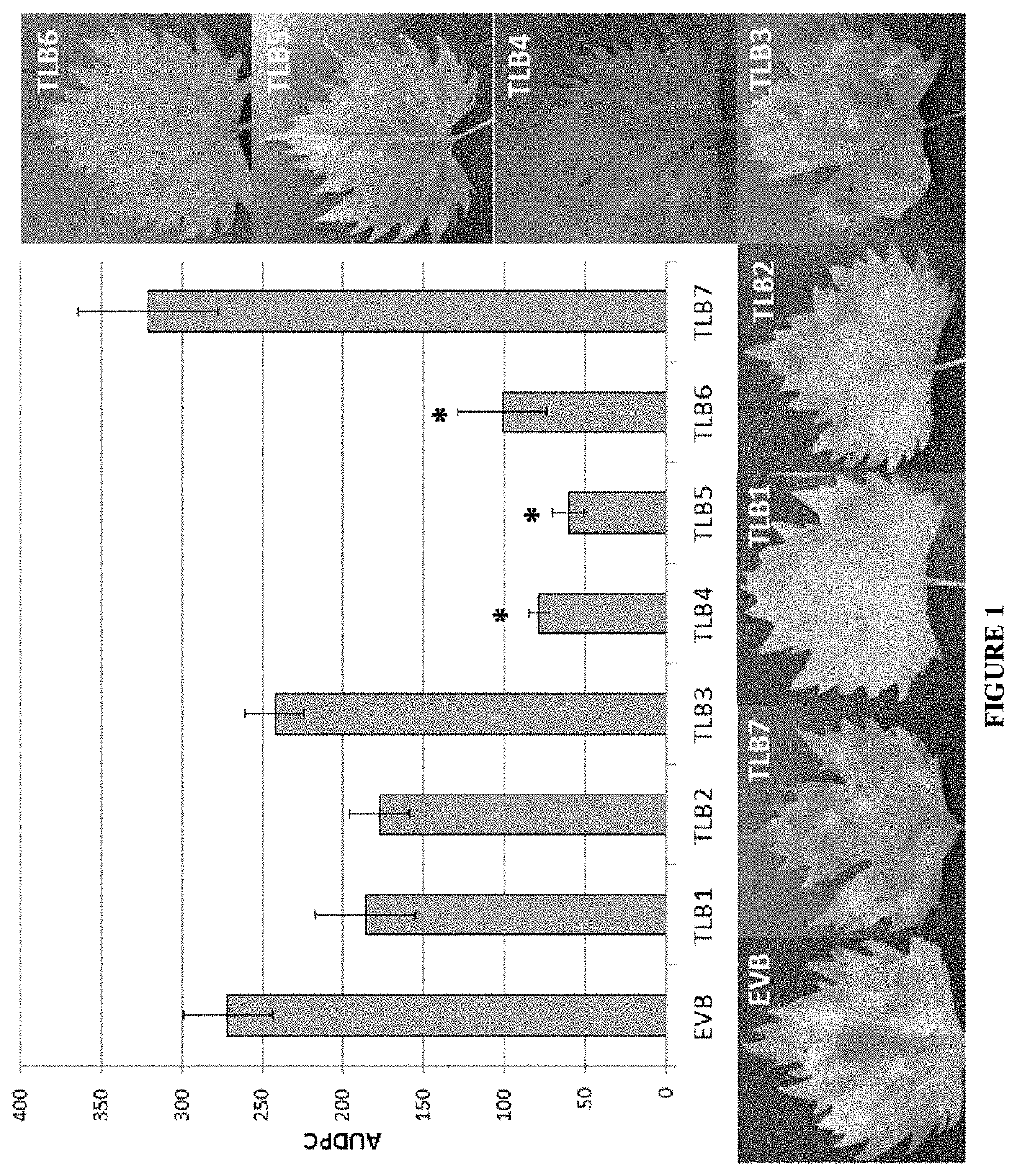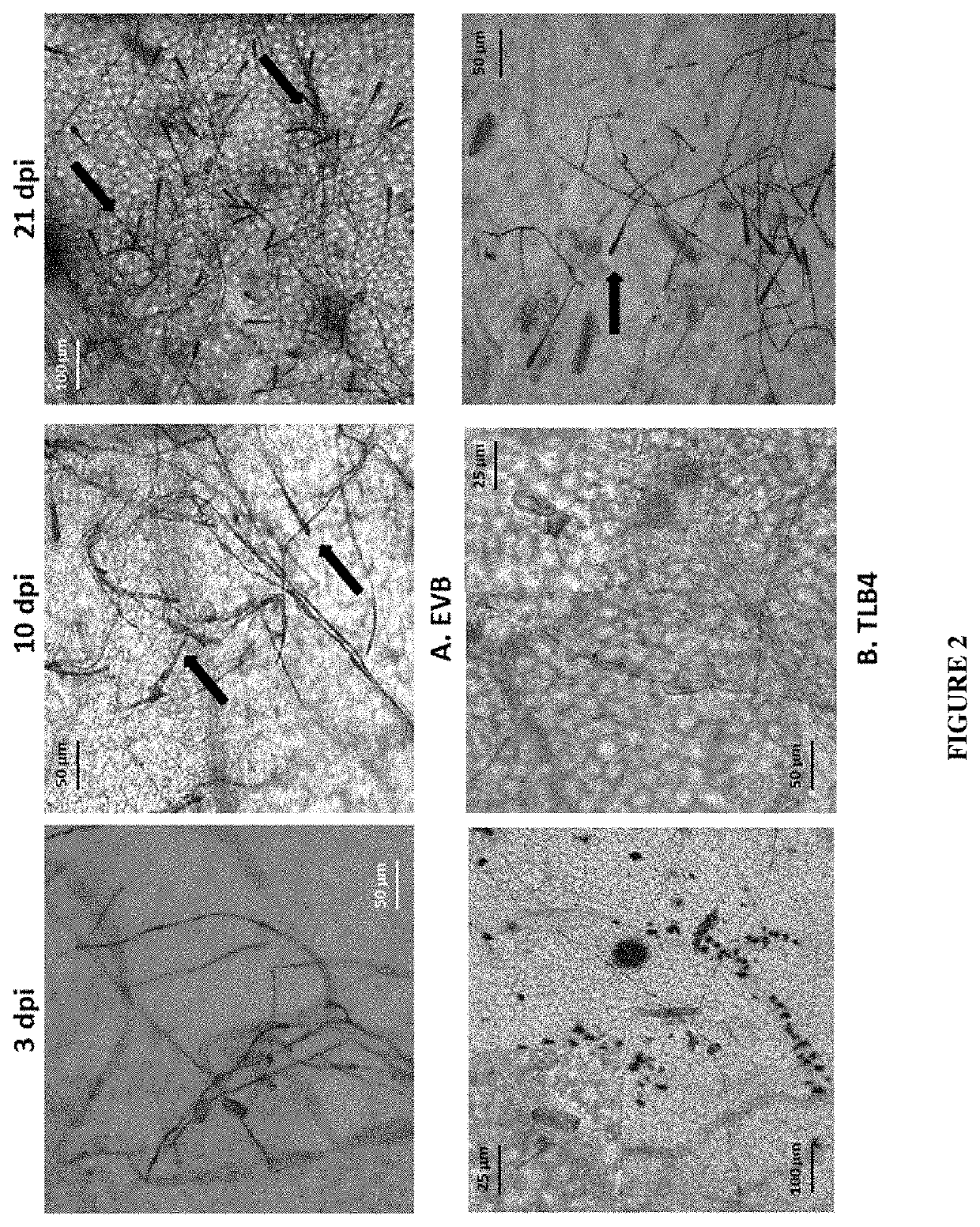Vitis Vinifera with Reduced MLO Expression and Increased Resistance to Powdery Mildew
a technology of vitis vinifera and mlo, which is applied in the field of vitis vinifera with reduced mlo expression and increased resistance to powdery mildew, can solve the problems of shriveling or cracking of berries, large amount of pesticides for grapevine, and significant loss of yield and berry quality
- Summary
- Abstract
- Description
- Claims
- Application Information
AI Technical Summary
Problems solved by technology
Method used
Image
Examples
example
Materials and Methods
Constructs for Grapevine Transformation
[0047]Fragments of 300-600 bp for the four MLO target genes VvMLO6, VvMLO7, VvMLO11 and VvMLO13 were amplified with specific primer pairs (Table 1) and cloned into the vector pENTR / SD-TOPO (Invitrogen).
TABLE 1Primers used to amplify MLO genes fragmentsfor the RNAi constructs.Gene#Primer ForwardPrimer ReverseVvMLO6CACCTGCTTACAGTTTTCCCTTGCAATTACAAACTCCCTACCTAAAC(SEQ ID NO: 46)(SEQ ID NO: 47)VvMLO7CACCGACAATTTTATCTCATGTTGTAACGAGAGAGTGGTTCGGATT(SEQ ID NO: 48)(SEQ ID NO: 49)VvMLO11CACCTCACTTATGATCAACTTTGGGACTACTGGGGTTACTGATCTGAC(SEQ ID NO: 50)(SEQ ID NO: 51)VvMLO13CACCGAGCTAATGAAATTTTGCATTTGCTAGGGTTGGCTTTGAG(SEQ ID NO: 52)(SEQ ID NO: 53)
[0048]After sequence validation, the four gene fragments were cloned in the RNAi Gateway vector pK7GWIWG2D(II) (Karimi et al. 2002) using the procedure described by Urso et al. (2013). The final constructs were verified by sequencing on both strands and were cloned into Agrobacterium tumefaciens ...
PUM
| Property | Measurement | Unit |
|---|---|---|
| RH | aaaaa | aaaaa |
| humidity | aaaaa | aaaaa |
| diameter | aaaaa | aaaaa |
Abstract
Description
Claims
Application Information
 Login to View More
Login to View More - R&D
- Intellectual Property
- Life Sciences
- Materials
- Tech Scout
- Unparalleled Data Quality
- Higher Quality Content
- 60% Fewer Hallucinations
Browse by: Latest US Patents, China's latest patents, Technical Efficacy Thesaurus, Application Domain, Technology Topic, Popular Technical Reports.
© 2025 PatSnap. All rights reserved.Legal|Privacy policy|Modern Slavery Act Transparency Statement|Sitemap|About US| Contact US: help@patsnap.com



